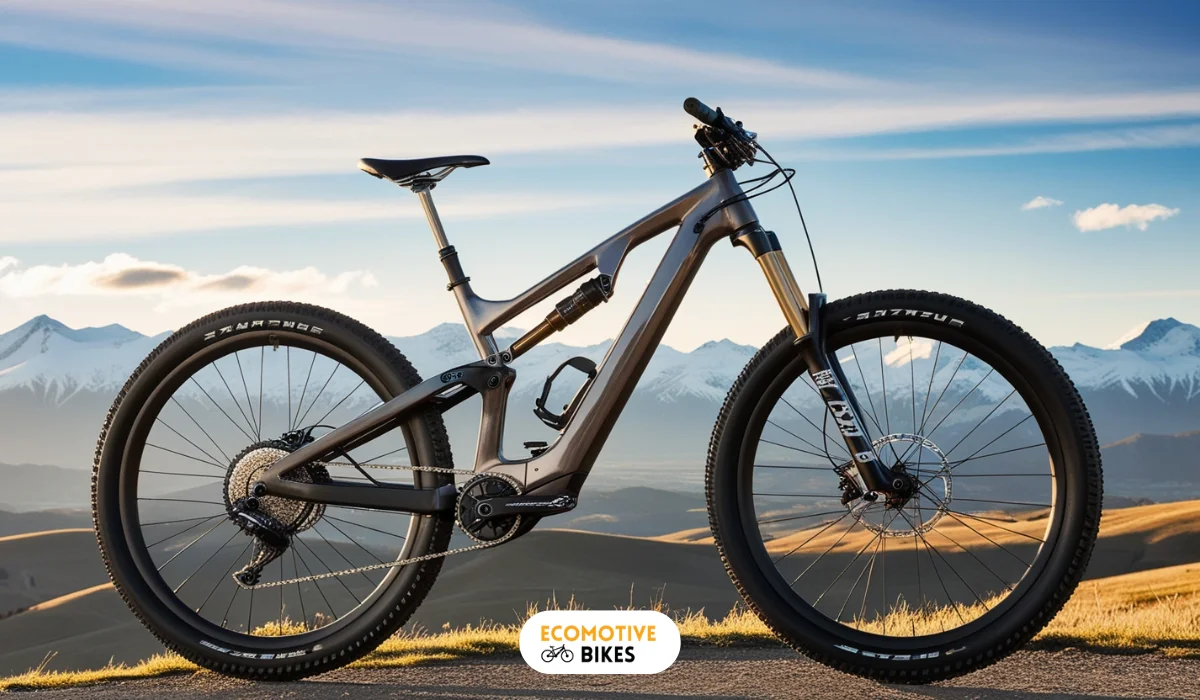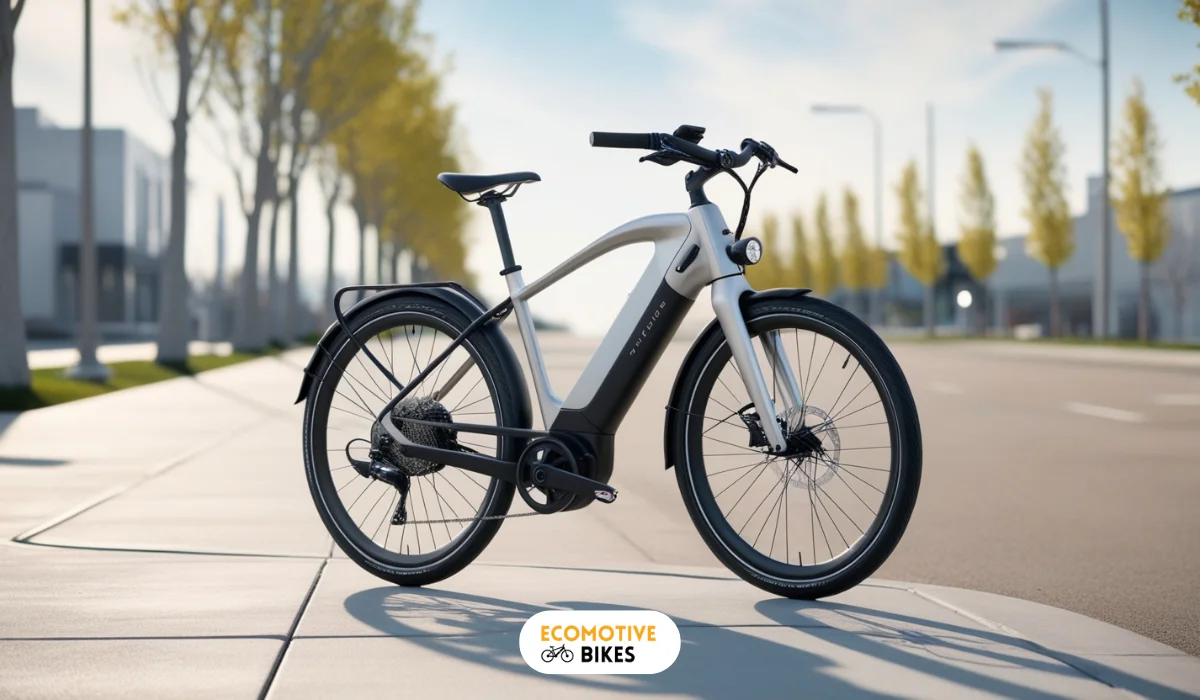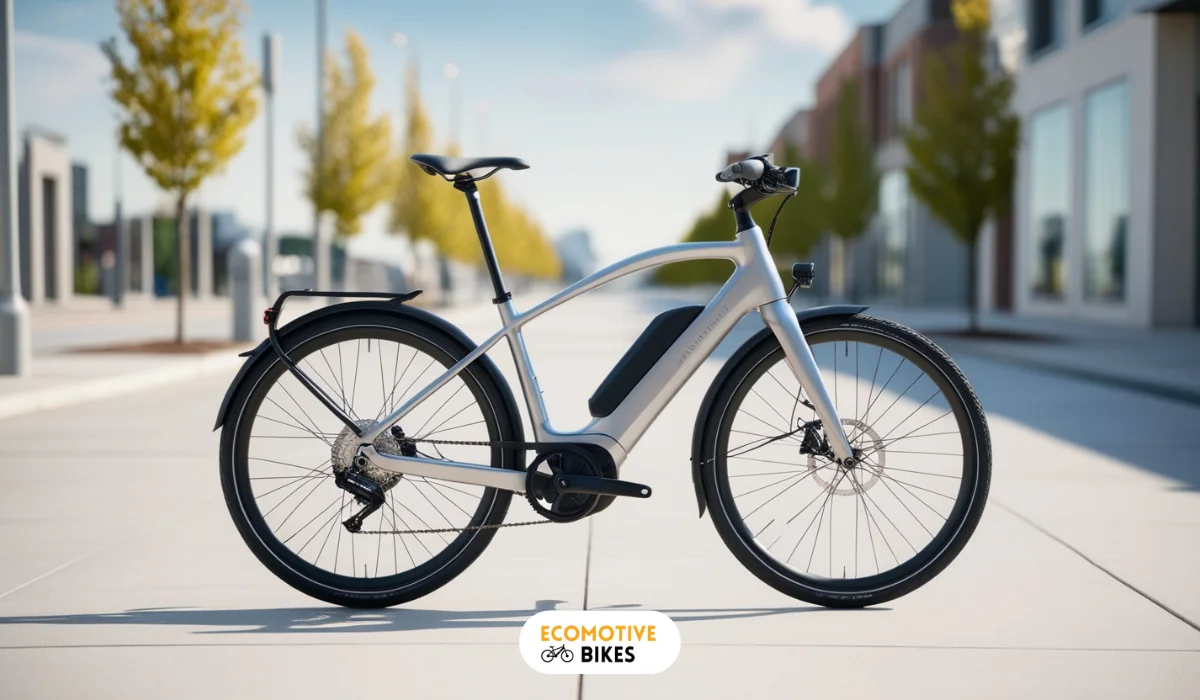How Fast Can an Electric Bike Go? E-Bike Speed Limits and Performance
Learn how fast can an electric bikego, including the speed limits for Class 1, 2, and 3 e-bikes. Explore performance factors and legal restrictions for top e-bike speeds.
Table of Contents
Related Articles:
How fast can an electric bike go? It’s a popping question for many e-bike enthusiasts. Whether you’re zipping through city streets or cruising scenic trails, speed is a key factor in choosing the right e-bike. With advancements in technology, electric bikes are no longer just a convenient mode of transport—they’re redefining how fast we can travel on two wheels.
From legal speed limits to the potential of high-performance models, let’s explore the thrilling world of e-bike speeds and discover just how fast these innovative machines can take you.
Before we discuss the topic in detail, here is a quick short answer to the question “How fast can an electric bike go?”:
Electric bikes can reach different top speeds depending on their class. Class 1 and Class 2 e-bikes are limited to 20 mph (32 km/h) with pedal assist or throttle. Class 3 e-bikes, also known as speed pedelecs, can reach speeds of 28 mph (45 km/h) with pedal assist. High-performance models can go faster, but they may require special licensing.

What factors influence e-bike speed?
- Motor power and battery capacity: The speed and range of an electric bike are significantly influenced by its motor power and battery capacity. A higher-wattage motor enables quicker acceleration, while a larger battery capacity provides a longer range. Both elements contribute to the overall performance of an e-bike, with motor power affecting acceleration and battery capacity determining the distance a rider can cover on a single charge.
- E-bike type: Electric bikes are classified into three primary categories based on their speed capabilities. Class 1 bikes offer pedal-assist only, reaching a maximum speed of 20 miles per hour. Class 2 bikes provide both pedal-assist and throttle, also reaching 20 miles per hour. Class 3 bikes, or speed pedelecs, offer a higher top speed of 28 miles per hour and are designed for experienced riders navigating urban environments.
- Terrain and riding conditions: The terrain and riding conditions significantly impact an electric bike’s speed. Steep hills require more power from the rider and the motor, leading to increased battery consumption. Riding on challenging terrains, such as hilly areas, increases the reliance on the motor’s assist, affecting overall speed and battery life. Understanding how different terrains impact e-bike performance is crucial for planning routes and optimizing battery usage.
- Rider weight and skill level: Rider weight and skill level play a vital role in determining an electric bike’s speed. Heavier riders may require more power from the motor, leading to increased battery consumption. Experienced riders tend to optimize their bike’s gears more effectively, reducing strain on the battery and enhancing overall performance. By understanding these factors, riders can adjust their riding techniques to maximize efficiency and prolong battery life.
- E-bike riding modes and efficiency: Motor power and riding modes significantly affect an electric bike’s speed and efficiency. Selecting higher power modes enables faster speeds with less effort but drains the battery more quickly. By choosing the appropriate riding mode based on terrain and riding conditions, riders can balance speed and battery usage effectively. Weight distribution on the bike, influenced by different riding modes, also plays a key role in overall efficiency and speed. Riders can adjust their riding modes to maintain stability, conserve battery power, and enhance their riding experience.
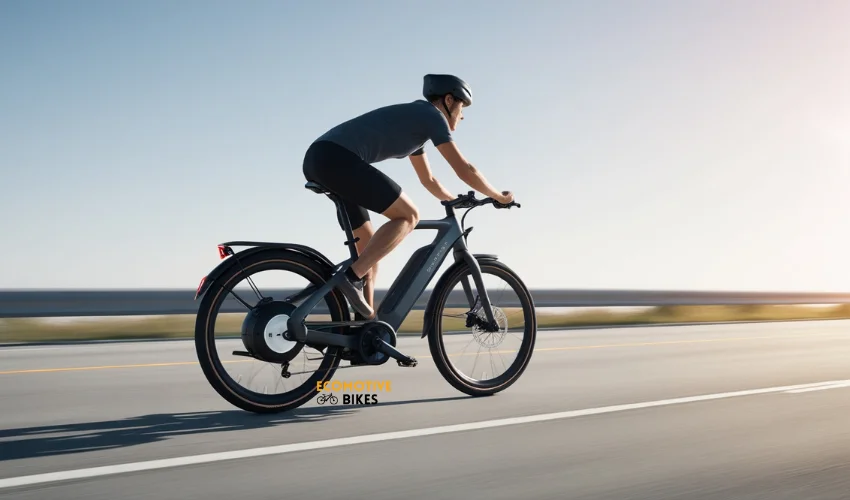
What are the different classes of e-bikes and their speed?
To fully appreciate the capabilities of electric bikes, it’s essential to understand their distinct classifications. E-bikes are categorized into three primary types, each having specific speed limitations.
- Class 1 electric bikes: Class 1 e-bikes are designed for a leisurely riding experience, offering motor assistance only when the rider pedals. With a top speed of 20 mph, they are ideal for beginners or those seeking a moderate boost in their cycling adventures. While some Class 1 e-bikes may feature a throttle, it only activates the motor assistance while pedaling, ensuring a controlled and comfortable ride.
- Class 2 electric bikes: Offering the convenience of a throttle, Class 2 e-bikes provide motor assistance even without pedaling, in addition to assisting while pedaling. With a top speed of 20 mph, they are suitable for riders who prefer a more hands-off approach to cycling. Class 2 e-bikes combine ease of use with moderate speeds, making them a popular choice for commuting or leisurely rides.
- Class 3 electric bikes: For riders seeking a higher level of assistance and speed, Class 3 e-bikes, also known as “speed pedelecs,” offer a top speed of 28 mph. These bikes are designed for more experienced cyclists who are comfortable with faster speeds and navigating busier roads. While regulations for Class 3 e-bikes may vary by region, their increased speed capability allows riders to cover longer distances and keep pace with traffic in urban settings.
Speed pedelecs and beyond
For riders seeking to push the boundaries of electric bike performance, speed pedelecs offer an exhilarating and advanced option. These high-performance e-bikes are capable of reaching speeds beyond the traditional 28 mph limit, catering to enthusiasts who prioritize speed and efficiency in their commuting or recreational activities.
To complement their superior speed capabilities, speed pedelecs often feature upgraded components and advanced motor systems, providing riders with a heightened level of performance and responsiveness on various terrains. These bikes are designed for experienced cyclists who are looking to embrace the thrill of high-speed riding while maintaining regulatory compliance with state laws regarding electric bike speed limits.
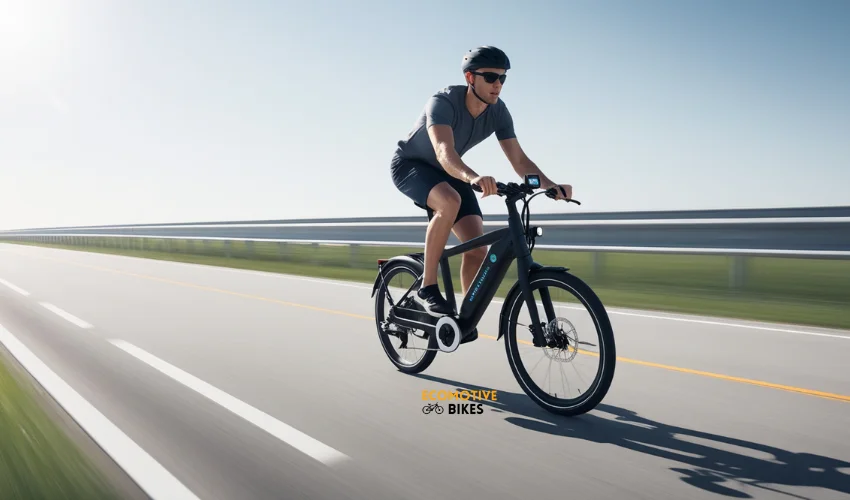
What are the legal speed limits for electric bikes?
The legal speed limits for electric bikes vary significantly across different jurisdictions worldwide.
The legal speed limit for e-bikes in the UK is 15.5 mph (25 km/h). Once the bike reaches this speed, the electric motor must stop assisting. Additionally, e-bikes cannot rely solely on motor power for movement.
Other important requirements for e-bikes in the UK include:
- The electric motor must have a maximum power output of 250 watts.
- The bike must be equipped with pedals that can propel it, and the motor can only assist when the pedals are in use.
- The bike must display either the power output or the manufacturer’s details of the motor, as well as the battery’s voltage or the bike’s top speed.
- Riders must also adhere to local speed limits when using bike lanes, paths, or riding in residential and commercial zones.
These regulations ensure that e-bikes remain safe and legal for public use in the UK.
- Federal and state regulations in the U.S.: Speed limits for electric bikes in the U.S. are regulated at both the federal and state levels. According to federal regulations, Class 1 electric bikes have a top speed limit of 20 mph, while Class 3 electric bikes can reach speeds up to 28 mph. Any vehicle with a motor rated at more than 750 watts is not considered an electric bicycle and falls under a different classification, such as a motorcycle. State laws may vary in terms of additional restrictions or specifications related to the use of electric bikes.
- International e-bike speed regulations: Internationally, the regulatory landscape for electric bike speeds is similarly diverse. In the United Kingdom, for instance, the maximum legal speed for an electric bike is 15.5 mph. The European Union has a more standardized approach, generally adhering to a 25 km/h (approximately 15.5 mph) limit for electric bikes classified as pedal-assist cycles.
These speed limits are designed to ensure the safety of both e-bike riders and other road users. By establishing clear guidelines, regulatory bodies aim to prevent accidents and maintain order on public roadways. However, it’s important to note that these limits may not be strictly enforced in all areas, and local laws and customs can vary.
How to maximize your e-bike’s performance and speed?
To maximize your e-bike’s performance and speed, here are the three tips to follow:
- Regular maintenance for peak performance: To ensure your e-bike operates at its best, regular maintenance is essential. Keeping the chain lubricated, tires inflated, and the bike clean helps prevent wear and tear, extending its lifespan and maximizing performance.
- Battery care for extended range: Efficient battery usage is crucial for maximizing your e-bike’s range. Monitor battery charge levels regularly and adhere to the manufacturer’s charging guidelines. Avoid complete battery depletion and overcharging to prolong battery life.
- Optimal gear usage and riding techniques: To maximize your e-bike’s performance, understand how to efficiently use gears and employ proper riding techniques. Utilizing all available gears and selecting the appropriate power modes, you can optimize your e-bike’s efficiency and overall performance. Shifting into lower gears when climbing hills reduces strain on the motor and battery, and preserves energy for longer rides.

What safety measures should you take when riding an electric bike at higher speeds?
Here are the two safety measures two must follow while riding an electric bike:
- The role of protective gear: When riding an electric bike at higher speeds, safety is paramount. Wear appropriate protective gear, such as a helmet, knee and elbow pads, and reflective clothing, to significantly reduce the risk of serious injuries in case of a fall or collision. Studies have shown that helmets can reduce the risk of head injury by up to 85%.
- Navigate traffic and pedestrian areas safely: Safety should always be a top priority when riding an electric bike, especially in areas with heavy traffic or pedestrian activity. Always adhere to traffic laws and signals, signal your intentions clearly, and maintain a safe distance from other road users. To ensure visibility, use lights, and reflectors, and wear brightly colored clothing. Following these safety guidelines and exercising caution, you can help prevent accidents and enjoy a safe and enjoyable riding experience.
Frequently asked questions about electric bike speed
What is the maximum speed of an electric bike?
The maximum legal speed for electric bikes varies depending on the region. In the United States, Class 1 e-bikes have a top speed of 20 mph, while Class 3 e-bikes can reach up to 28 mph. However, the actual speed may depend on factors like motor power, battery capacity, terrain, and rider weight.
Can an e-bike go 30 mph?
Yes, while Class 3 e-bikes have a legal top speed of 28 mph, some models may be capable of reaching speeds slightly higher. However, exceeding the legal limit can be dangerous and may lead to legal consequences.
How fast can a 1000-watt bike go?
A 1000-watt electric bike can typically reach a top speed of 28-32 mph. However, this speed may vary depending on factors like terrain, rider weight, and tire conditions.
How fast is a 750W e-bike?
A 750-watt e-bike can typically travel at 28 mph or faster. While higher wattages can boost speed, they may also pose safety risks and may not be legal in some areas.
Final Word: How fast can an electric bike go?
Electric bikes offer a thrilling and sustainable way to commute and explore. While their top speed can vary depending on factors like battery capacity, motor power, and local regulations, you can expect to cruise at speeds ranging from 15 to 30 miles per hour. So, whether you’re looking for a faster commute or a fun way to explore your surroundings, electric bikes provide a powerful and enjoyable riding experience.
You can find out more interesting posts about electric bikes here.

